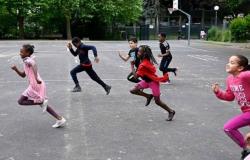On the eve of the European elections on June 9, electoral participation is a major issue. One in two French voters abstained during the 2019 European elections. In 2024, this figure would decrease very slightly according to an (optimistic) Eurobarometer survey.
Thus, 67% of French people say that they will probably vote this Sunday, June 9. Those under 25 and the working classes form the social categories abstaining the most. Faced with this lack of enthusiasm, candidates are trying to mobilize by all means, and in particular through social networks. This is for example the case of Jordan Bardella, head of the National Rally list for these elections. The candidate is banking on his good performance on TikTok in particular to mobilize the sections of the population furthest from politics, and in particular young people. But are social networks really capable of bringing audiences furthest from politics back to the polls? In light of the conclusions of a chapter “Are votes played out on social networks? » co-written in the collective work Citizens and parties after 2022. Distance, Fragmentationpublished in May 2024, we offer here some answers.
HAS read also:
How the European elections have become a central event in life French politics
Social networks democratize politics
During the 2022 presidential election, almost a third of those under 35 said, according to the PEOPLE 2022 survey, that they had viewed, shared or commented on content related to the election on social networks. Thus, among young people, social networks could promote political participation by allowing more episodic and flexible mobilization, corresponding to a new relationship with politics.
[Déjà plus de 120 000 abonnements aux newsletters The Conversation. Et vous ? Abonnez-vous aujourd’hui pour mieux comprendre les grands enjeux du monde.]
Still according to the People 2022 survey, among those who adopt these online political practices, 36% belong to the working classes (workers and employees) and 15% to intermediate professions (for example nurses, school teachers and technicians). ). Not being able to make ends meet also appears to be a social characteristic favorable to online political practices, although we do not yet really understand why.
Social networks therefore seem to democratize politics for categories of the population that are traditionally more distant, by reducing the constraints in terms of time or even specific skills usually attached to political activities. Individuals can get information anywhere, anytime and in a less formal way on social networks, even if the latter can be criticized for their unreliability in terms of the information they disseminate.
Aware of this state of affairs, candidates are increasingly integrating social networks into their political communication strategy. They are increasing their online presence, both on Twitter, Facebook and YouTube, and now on Instagram, TikTok and Twitch.
Jordan Bardella perfectly illustrates this intensive use of social networks with 1.3 million subscribers on TikTok and 500,000 subscribers and 1,323 posts on Instagram. Indeed, each platform attracts relatively differentiated audiences, Facebook being rather representative of the French population in terms of age and socio-professional categories while TikTok, Instagram or Twitch attract the youngest and X most interested in politics. By being present on as many platforms as possible, the candidates hope to reach a maximum number of people.
Online and offline continuity of politicization
However, if the use of social networks is constantly growing among the French population – 47% of French people say they have learned about the 2022 presidential campaign at least once via public social networks (Instagram, Twitter, etc.) –, only 8.9% do it regularly.
Above all, active political uses (like, comment or sharing of content related to the campaign) of social networks remain less frequent than so-called passive uses (consumption of information). Among all political practices, those that require the least commitment are the most common among the French population. Thus, according to the PEOPLE 2022 survey: if 47.1% of French people say they have viewed content related to the 2022 campaign on social networks, the figures drop to 28.2% for those who say they have commented on such content and 26.3% regarding sharing.
Mirroring this, 86.6% of those questioned said they had spoken about the campaign offline and 69.5% had read campaign leaflets. 19.2% also attended a political event (meeting, etc.) and 18.6% met activists.
These figures therefore demonstrate that the adoption of political practices online – and even offline – still remains largely discriminatory. It is in fact largely determined by the level of interest in politics of individuals. In addition, online political practices tend to be cumulative: an individual who comments on content related to the campaign will also tend to share and comment on it. likeand this, on several platforms.
They also often complement offline political participation. Indeed, online political practices depend on the intensity of people’s activist commitment. The most militant are therefore not only active on social networks but they are also – and above all! – those who go to the polls most regularly. Thus, eight out of 10 people who declare three online practices voted in the two rounds of the 2022 presidential election. Rather than politicization only online, social networks therefore participate more in a continuity of politicization, both for ‘inform only to participate. As a result, it is offline political practices that continue to determine electoral participation.
Social networks alone do not encourage voting
Greater information or familiarity with politics does not necessarily lead to voting. Indeed, electoral participation and the choice of candidate are multi-determined and politicization on social networks is not enough. The fact of going to vote remains above all motivated by the fact of having already voted in previous elections and by the adoption of offline political practices, such as reading leaflets or discussing with activists. Political parties would therefore have no interest in abandoning more “traditional” techniques to mobilize their electorate.
Especially since social networks are not the only channels of access to information. Television also remains the priority channel for obtaining information during electoral campaigns – particularly among older people. One in two French people got their information via television during the 2022 presidential campaign.
Certainly, the time of 30 million viewers for the debate between the two rounds between Valéry Giscard d’Estaing and François Mitterrand is long gone. However, even for less popular elections like the European ones, the debate of the head of the list on May 27, 2024 organized by BFMTV still brought together 4.8% of the audience. Rather than an opposition between traditional media and social networks, we are seeing an informational convergence with individuals more active in their information mixing various channels. Likewise, media production is articulated between traditional media and social networks. Thus, the televised debates between candidates are commented on by the press like the newspaper Live The worldor on Twitter.
Ultimately, and to answer our initial question, we note that social networks alone do not make it possible to fight against abstention. Thus, even if the new TenTen application, very popular among young people, directly calls on all citizens to vote, electoral participation risks remaining “in airplane mode” on Sunday June 9.






